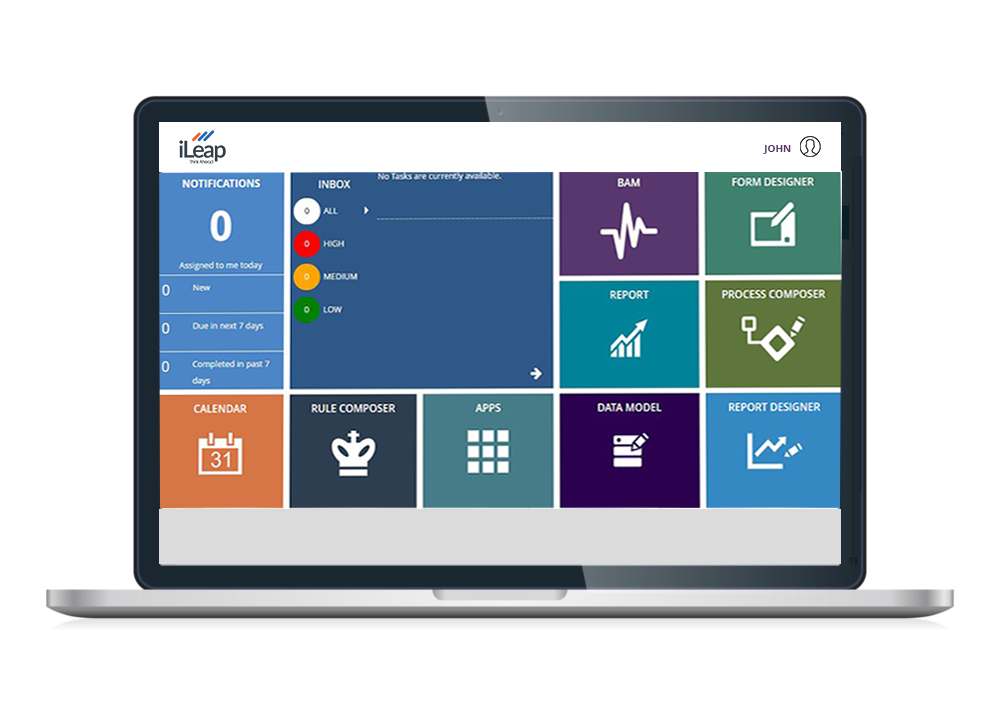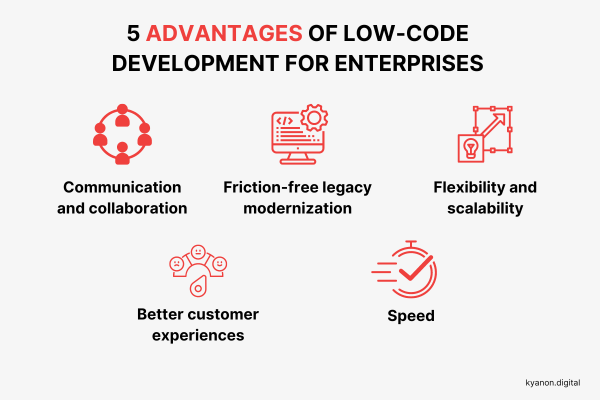Best Suggestions On Deciding On Low-Code Platform Info
Benefits Of Developing Applications Using Low-Code In Terms Of Accessibility To Non-DevelopersLow-code apps improve accessibility by non-developers (often called "citizen-developers") because of several key elements.
Drag-and–Drop Builders : Low-code platforms have drag-and-drop interfaces, which allow non-developers, who do not requirement to write code to create visual applications. The development process is now easier for those with no technical background.
WYSIWYG editors Editors that use WYSIWYG: These "What You See is What You get" editors let users create interfaces and workflows that are identical to the finished product. This makes it much easier to learn and use.
Simple Logic and Workflow:
Visual Workflow modeling: Users can design business processes and application logic using visual flowcharts. These models are more intuitive to work with than traditional code methods.
Pre-built Logical Components: Many low-code programs come with built-in components for logic (e.g. loops, conditions) which are easily configurable. This means that there is no need to code complex programs.
Templates and components that are reuseable:
Libraries of prebuilt templates Low-code platforms often offer libraries of templates for the most popular types of applications. This gives non-developers the possibility of starting with a solid basis and then modify it according to their needs.
Reusable Widgets and Modules Users can make use of reusable widgets. This makes it easier to create and eliminates the requirement for in-depth understanding.
Guided Development and Tutorials:
Step-byStep Guides: Platforms will typically provide a development path with guidance or online tutorials on-screen instructions to assist users who aren't developers to create applications.
Interactive Tutorials Interactive tutorials are interactive and hands-on, which help users to learn through doing. This increases their confidence in the platform.
Integration with existing tools:
Seamless Integration: Low-code platforms are designed to integrate easily with the existing business tools and systems (e.g. CRM and ERP) which allows non-developers to build applications that fit within their current workflows.
APIs Connectors, APIs: These tools make integration easier by allowing non-developers (or even users) to connect their apps to external services.
Collaboration Features:
Team Collaboration: real-time collaboration, shared workspaces, and shared workspaces enable business analysts, non-developers, and other stakeholders to effectively work alongside professional developers.
Role Based Access Control You can assign non-developers specific roles that have the right access level so that they can be part of the development process without compromise on security or function.
Automated Testing & Debugging
Low-code platforms often come with a built-in testing and debugging tools which automates this process. Non-developers can now easily verify that their app is working correctly.
Error Highlighting: When issues arise the platform highlights any mistakes and suggests solutions and guides non-developers through troubleshooting steps.
The ability of low-code applications to make development accessible for those who are not developers is its main benefit. Low-code platforms provide intuitive visual tools, guided experiences, and let business users actively take part in the creation apps, maintaining them and updating them. Follow the top rated Low-code Platform for application development tips for more advice including software for app development, develop mobile application, develop web application, build a docker container, cloud software applications, lowcode no code, azure sql server, cloud software applications, azure sql databases, paas service and more.

Benefits Of Developing Applications Using Low-Code In Terms Of Cost-Efficiency
Low-code application creation offers many advantages when it comes to cost-effectiveness. Companies trying to cut costs can benefit from this method while still delivering high-quality applications. These are the main benefits:
The low-code platform reduces the need for long manual code. This reduces time and effort of developers while developing applications. The result is lower labor costs.
Reduced Developer Resources: Since low-code is more efficient and less time to develop, less specialized developers will be needed. The cost of hiring and staffing could be reduced significantly.
Quicker time to market:
Accelerated Development Cycle: Visual development tools and pre-built parts offered by low-code platforms facilitate rapid development of applications, which allows companies to bring their products to market faster. This could result in faster revenues and better position in the marketplace.
Rapid prototyping: By developing and testing prototypes in a short time companies can decrease the time they devote to the development phase and enable faster iterations on the basis of user feedback.
Reduced Maintenance Costs
Due to their modularity as well as standard components, applications built on low-code platforms are easier to maintain. The ongoing maintenance and support costs are reduced.
Automated updates: A lot of low-code platforms automate updates and patches, making sure that applications are secure and up to date without the need for a lengthy manual intervention.
Efficient Resource Utilization:
Low-code platform contributions allow business users as well as other non-developers to participate in the creation process. This allows companies to benefit from the talents of a diverse spectrum of employees.
Utilizing IT resources efficiently IT teams can focus on strategic projects instead of being bogged with routine work on development, thereby increasing the efficiency of their teams and productivity overall.
Scalable Pricing Models
Subscription-based Prices: Many lowcode platforms offer flexible, subscription-based price models that increase with usage. This allows businesses to be able to align their spending with the actual demands and growth while avoiding significant initial costs.
Pay-Assosiated Alternatives: Some platform providers offer pay-assosiated options. They ensure that businesses are only liable for the services they use, which is beneficial to startups and small business that have limited resources.
Reduce the cost of Third-Party software:
Built-in Functionalities : Low-code software usually comes with built-in functionality and integrations which reduces the requirement for third-party tools, software and licenses.
Pre-Built Integrations by integrating well-known services and systems You can save time and money by not having the necessity of creating custom integrations.
Increased ROI
A faster return on investment: The combination of speedy development, lower cost, and quicker time to market mean that companies can achieve a faster return on investment (ROI) on their apps.
Increased Agility. Businesses are able to quickly adjust to the demands of customers and market trends and ensure that they remain relevant. They can also profit from new business opportunities as they occur.
Low Cost Training:
User-Friendly Interfaces: The intuitive interfaces and user-friendly features of low-code platforms reduce the learning curve, thereby making it less necessary to conduct lengthy training.
Accessible Resources: Many platforms using low-code provide comprehensive instructional materials, tutorials, as well as community support. This means that there is less necessity for formal education, as well as the costs associated with it.
Collaboration Streamlined:
Enhance Collaboration Tool The built-in collaboration tool improves collaboration and communication among team members. This leads to faster development processes and reduces project overhead.
Unified Development Environment: A single integrated development environment helps improve workflows and reduces complexities and costs associated with managing multiple platforms and tools.
Overall, the cost effectiveness of software development using low-code can be attributed to its ability to reduce maintenance and development costs and increase time to market, optimize resource use, and offer flexible pricing models. Low-code offers substantial financial advantages for businesses. See the most popular my response on Enterprise application development with Low-code Platform for more tips including azure sql server, rad development, microsoft azure sql, app development platform, build with docker, software for app development, develop mobile application, azure sql databases, software for app development, develop mobile application and more.

The Benefits Of Developing Applications Using Low-Code In Collaboration And Workflow
Low-code development of applications offers a variety of benefits in workflow and collaboration, making it an ideal choice for businesses looking to enhance team productivity and speed up development processes. These are the main advantages: Improved Collaboration Across Functions:
Unified Development Environment (UDE): Low-code platforms provide a single, unified development environment that enables everyone in the team such as developers and business analysts, to work together efficiently. This reduces the silos that exist and encourages better communication.
Visual Development Tools - The drag and drop visual nature of low-code platforms allows non-technical personnel to take part in the development process. This makes sure that all business requirements are captured and implemented accurately.
Enhanced Communication:
Real-Time Co-operation: Many platforms that have low-code support live-time co-operation capabilities like commenting, editing in parallel and instant feedback. They allow for constant communication, reducing the amount of time required for back-and-forth discussions.
Shared workspaces. Teams are able to collaborate through shared workspaces. In this workspace, they can review, edit, and debate various project elements.
Workflow management simplified:
Built-in Tools for Project Management: Platforms that are low-code often include integrated project management tools which help teams plan to track and manage their development initiatives. This includes tasks assignment as well as monitoring progress and management of deadlines.
Workflow automation: Automating repetitive workflows and tasks reduces mistakes and manual labor, allowing teams and individuals to concentrate on strategic projects and increase efficiency.
Faster Iteration Cycles:
Rapid prototyping. Low-code platform enables rapid prototyping. This means feedback can be integrated quickly and improvements can be made.
Support for agile development: Supporting agile methodologies allow teams to be continuously working in sprints. This makes it easier to adapt and deliver small incremental improvements to capabilities.
Accessibility:
Citizens Development: Lowcode platforms enable people who use business software (citizen developers), to create, modify, and maintain applications with no programming expertise. This reduces the burden on IT and development teams and allows for quicker response to business requirements.
Training and Onboarding. Tools that are intuitive and comprehensive training materials help the new team member get up-to-speed and increase the overall level of collaboration.
Centralized Documentation and Knowledge Sharing:
Integrated documentation Platform features that are low-code usually allow you to make and manage documents inside the platform. The entire project's information will be centralized and easily accessible.
Knowledge Repositories : Teams can build knowledge repositories that contain templates, best practices, and reusable components. This allows for sharing of knowledge and minimizes the need for duplicate efforts.
Consistency and uniformity:
Standardized components: A standardized components, built in advance, ensures the consistency of the applications. Team members are able to understand and work with greater ease with different components.
Governance and Compliance: Built in governance frameworks ensure all development is in line with the organization's standards and requirements of the regulatory environment, reducing non-compliance risks and ensuring applications meet high quality standards.
Feedback and Improvement Loops:
Integrated Feedback mechanisms: Platforms with low-code usually have an integrated feedback mechanisms that allow users to give their feedback on the application. Feedback can then become incorporated into development.
Continuous Improvement: The capability to rapidly test and deploy modifications based on feedback allows for constant improvement of software, aligning them closely with user needs and business goals.
Visualization and Reporting
Real-Time Analysis: Analytics and reporting tools integrated into the software give real-time information on the progress of projects, user interaction and overall performance. This allows an informed decision-making process based on data.
Visual Workflow Mapping: Visual tools for mapping workflows and processes helps teams to understand and improve their workflows, while identifying bottlenecks and areas for improvement.
Low-code application development has many benefits for collaboration and workflow. This includes the ability to bring different teams together in one space, simplify communication and streamline certain processes. This creates more effective and agile environment of development that is co-operative.
